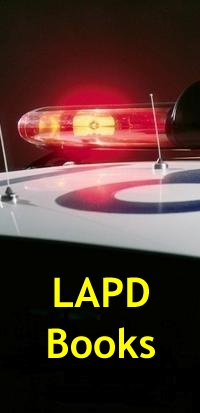|
Daryl Francis Gates was born in Highland Park, California, on August the 30th,
1926. The depression had an impact on his early life, with his father becoming an alcoholic after losing his job and frequently
ending up in trouble with the police in Glendale where they lived. His mother had to support the family alone and they received
government hand-outs. But although his family were poor their home was never without hope, Daryl graduated from High School
and joined the navy seeing action in the Pacific. Shortly after leaving the navy he attended college on the GI Bill and married,
in need of an income, his friend suggested he join the LAPD.
In 1949 he joined the LAPD. Among his roles as an officer, Daryl Gates was picked
to be the chauffeur for Chief William Parker. William Parker was credited with being the Chief that reformed and streamlined
the LAPD, bringing in changes to stamp out corruption and improve efficiency. One such change was to assign police according
to the time of day and neighborhood where crimes were committed - a proactive approach to policing, which made LAPD the most
aggressive police department in the country. As his chauffer, Daryl Gates soon learned the importance of political support.
Gates worked hard for his promotional exams and came out first in the Sergeants
exam, and in fact came out first in every exam after that too. On his promotion to Lieutenant he rejoined Chief Parker as
his executive officer. During his early career gates also worked on the Manson Family and the Hillside Stranglers murders.
He was promoted to Captain and became responsible for intelligence, and by 1965
he was an Inspector, shortly before the Watts Riot erupted. In 1978 Daryl F Gates became the 49th Chief of the Los Angeles
Police Department, and little did he know that he would be the last of the great politically powerful Chiefs of the LAPD,
as after his tenure a system of 5yr terms was devised.
Daryl F. Gates is credited with inventing
the SWAT - Special Weapons And Tactics concept, in 1965. This is a model used by law enforcement agencies throughout the world
today for their specialized units dealing with hostage rescue and extreme situations involving armed and dangerous suspects.
In the 1960s Los Angeles had some serious troubles with sniping incidents against police officers and civilians. Ordinary
officers didn't handle those situations at all well, because line police officers, whose job is simple law enforcement,
get limited weapons training, very little weapons practice, and effectively no team combat tactics or "counterforce"
capability. Officer John Nelson came up with the idea to form a specially trained and equipped unit, intended to respond to
and manage critical situations while minimizing police casualties. Inspector Daryl F. Gates approved this idea, and he formed
a small select group of volunteer officers. The first SWAT team in world was born, LAPD SWAT, D-Platoon of the Metro Division.
This first SWAT unit was initially constituted as 15 teams of four men each, for a total staff of 60. These officers were
given special status and benefits. They had to attend special monthly training. This unit also served as security unit for
police facilities during civil unrest. Daryl F. Gates is the author of Chief: My Life in the L.A.P.D.
One reader of Chief: My Life in the
L.A.P.D. said, “There is a good reason this book is so hard to find: it is one hell of a good read from the early start
of the super chief’s career all the way to his unfortunate retirement this book takes the reader to the inside of the
LAPD's world. The Chief did a great job for his first attempt. This reviewer only hopes he will produce more! The viewer
gets an insiders look at the nations best police department the Los Angeles Police Department.”
One reader of Chief: My Life in the
L.A.P.D. said, “A hard to find book but one well worth reading to anyone interested in law enforcement or, in particular,
the LAPD. I couldn't put it down. Gates does an excellent job in providing the reader with a good picture of the Los Angeles
police force and the trials and tribulations it's endured for the last 40 years. Gates comes across as a chief who genuinely
cares for his department and it's officers as well as the community in which they serve. Plagued by a seeming knack to
say the wrong thing or be endlessly misinterpreted by the media, one can not help but like the man and sincerely hope he will
pen another one in the future.
|
